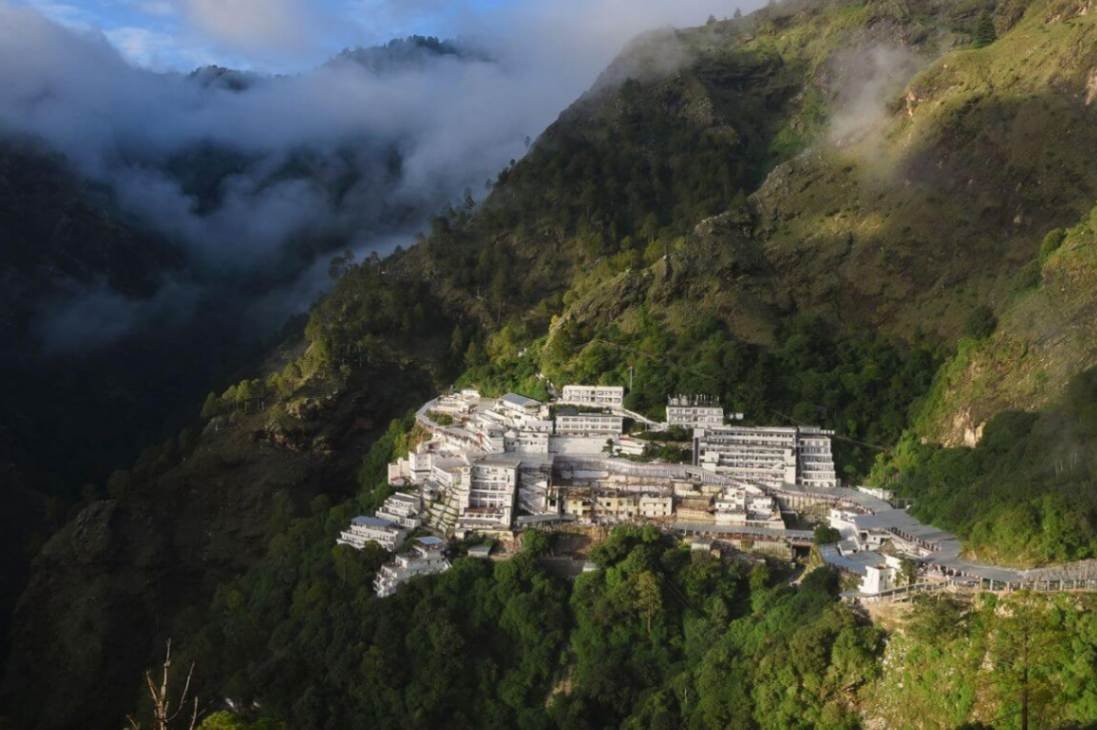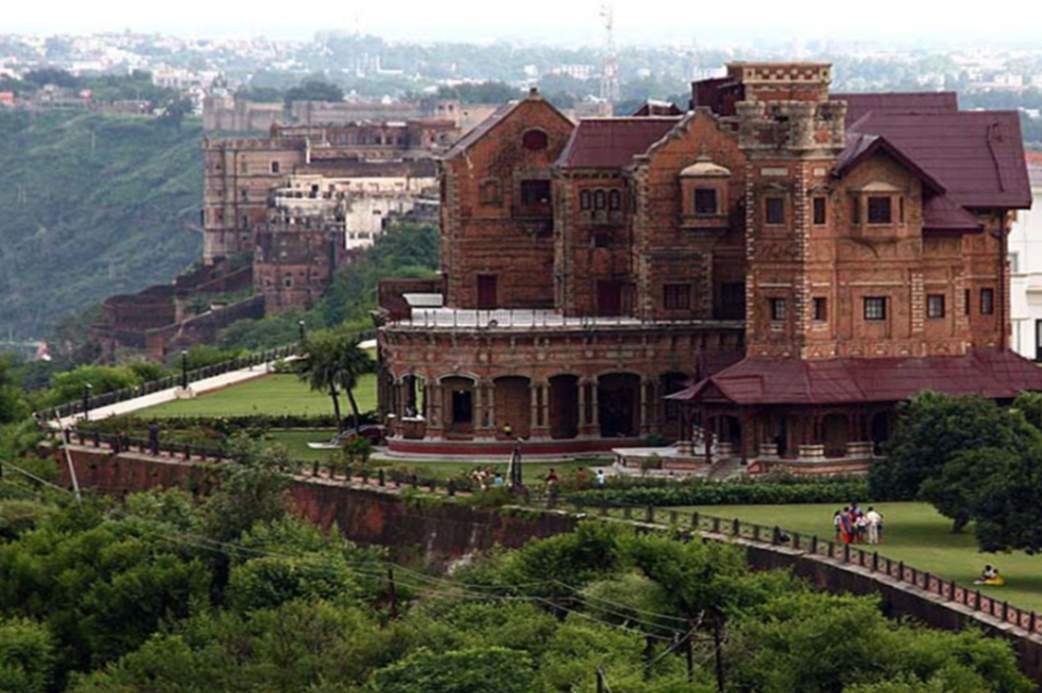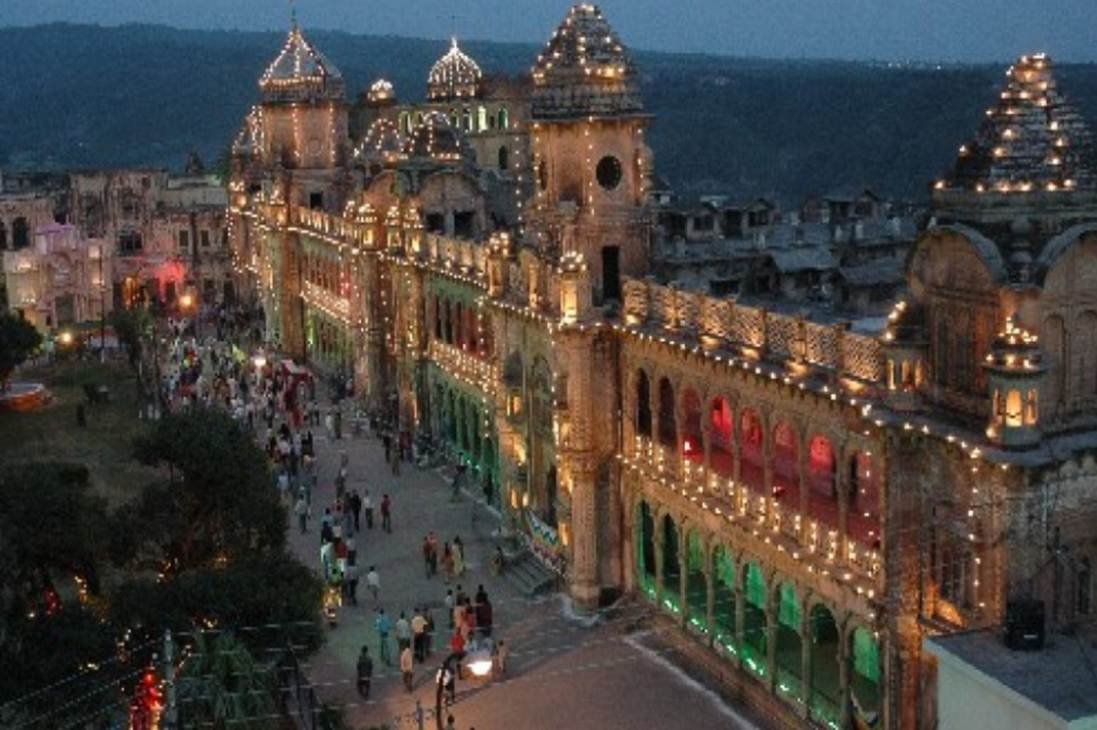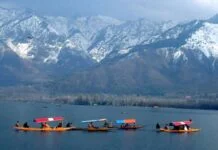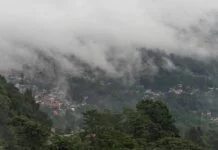tourist places of jammu and kashmir
Introduction:Places to visit in Jammu
Jammu, a city located in the northern part of India, is often overshadowed by its more famous neighbors, such as the beautiful Kashmir Valley. However, Jammu is a traveler’s paradise in its own right, with a rich cultural heritage, stunning landscapes and unique experiences waiting to be discovered. In this article, we embark on a journey to uncover the hidden gems of Jammu, India and explore why it deserves a place on every adventurer’s itinerary.
Jammu is the second largest city in Jammu and Kashmir. Jammu is not much attractive as a tourist center but the city is important as a gateway to travel to Kashmir. Winters are severe in the northern part of Kashmir, but winters are bearable in Jammu. That is why this city is the winter capital of the state. Due to the Vaishno devi Yatra, Jammu is crowded all year round. Amazing coexistence of past and present in this city. At the foothills of the Himalayas, this city has several ancient temples, forts, palaces.
It is said that in the Vedic period Suryavanshi King Jambulochana came hunting and saw deer and tiger coming to drink water at the same time. The king’s councilors explained that there was no hostility anywhere in the region. Inspired, he built a capital on the banks of the Tawai River, named Jambupura. His brother Raja Bahu built the fort. Mahakali or Bahubali Matar was worshiped in the fort. Along with various temples is the famous Pir Budhan Ali Shah’s dargah.
Tawai and Chandrabhaga rivers flow at both ends of Jammu city. 1000 year old Bahu fort on the banks of river Tawai, 4 km from the city. Perhaps the oldest architectural monument in Jammu, this fort was built by the Dokra king Balulochan. Currently, most of the fort is in ruins. The fort includes the ancient Kalimandir, built in 1822. At the entrance of the fort is the temple of Goddess Mahalakshmi, Akbar’s Mosque is a short distance away. The Raja Hari Mandi Palace of Kashmir is spectacular.
Jammu tourist places-Historical Attractions of Jammu
Explore the Magnificent Ranbireshwar Temple: One of the most enchanting landmarks in Jammu is the Ranbireshwar Temple. Dedicated to Lord Shiva, this ancient temple is a testament to the city’s rich religious history and intricate architecture.
Attractive Amar Mahal Palace
Amarmahal Palace: With its stunning red sandstone architecture, a museum that showcases the opulent lifestyle of the Dogra kings. Visitors can immerse themselves in Jammu’s royal past while enjoying the picturesque view of the River Tavi.
King Amarsingh built this palace on the banks of river Tawai. Built in red sandstone under the supervision of a French architect, the mahal has the impression of western architecture. Shivalik mountain and Jammu city are visible from Mahal. It houses one of the best libraries in the city with a collection of over 25,000 books including various ancient books, various family portraits of the dynasty, miniature paintings of Nal-Damayotti. Heritage Hotel Horinibus Palace has been built next to it. Autos, buses coming from the city.
Open-The Amar Mahal Palace is open to the public from 9.00 AM to 1.00 PM and from 2:00 PM to 5:00 PM. It remains closed on Mondays.
Ticket Price of Amar Mahal Palace
Adults: 10₹ /- per head
Children: 5₹ /- per head
Foreign Nationals: 50₹ / per head
Mubarak Mandi Palace: Another ancient palace of the city was built in 1824. The architecture is a blend of Mughal, Rajasthani and Western influences. On one side of the mahal is the Tawai river, on the other is the city of Jammu. The neighborhood has many parts, with gardens.
The most interesting Shis Mahal. Next to Dogra Art Museum. There is a collection of more than 800 Dogra and Pahari paintings, weapons of Shahjahan, handwritten Shahnama and Sikandernama in Persian language. Closed on Mondays, open 8.00-13.30 in summer, 10.30-16.30 in winter, closed on Mondays.
Raghunath Temple: A cluster of temples are built around this temple in the market area of the city. The construction of this temple was started by Maharaja Gulab Singh in 1851, which was completed by his son Ranbir Singh. This temple is considered to be the most important Hindu temple in the plains of North India after Varanasi. The architecture is worth a look. The temple has idols of Rama, Sita, Lakshmana.
With its marble stone walls adorned with various paintings, this temple is one of the attractions of Jammu and houses a number of ancient idols. The Rambireshwar Temple with 1000 Shivlingas is also worth a visit. Other temples in Jammu include Pir Kho Cave Temple, Panchbakhtar Temple, Ranbireshwar Temple, Laxminarayan’ Temple, Dudhdhari Temple.
Another attraction of Jammu is the Dargah of Pir Budhan Ali Shah or Pir Baba. This Pir Baba, who was very close to Guru Gobind Singh, survived only by drinking milk. Every Thursday people of all religions including Hindus, Muslims, Sikhs come to this dargah to pay their respects.
Pir Baba Dargah: Jammu has a mosque for Muslims called Pir Baba Dargah. A significant spiritual and religious centre in Jammu is the mosque. This mosque was constructed in honour of Pir Budhan Ali Shah, a saint who lived in this area. It is thought that Pir Budhan Ali Shah lived for more than 500 years. It is imperative that you visit this mosque. The saint was deeply moved by Guru Nanak’s teachings. He was educated in the Sikh faith during the reign of Guru Gobind Singh. Sikhs and Muslims both go to Pir Baba Dargah. Time needed: two to three hours.
Major festivals in Jammu and surrounding areas are Lohri during Makar Sankranti in January. A dance festival is held at Kud during Lohri in Banganga. The New Year is ushered in with special pujas in temples and gurudwaras on the first day of the year (April 13-14) as per the Hindu calendar, on the festival of Baisakhi. A fair is held twice a year (March-April and September-October) at Kali Mandir in Bahu Fort.
A fair is held on the day of Chaitra Chaturdashi in March-April at North Behni, 25 km from Jammu. Purmandale, 39 km from Jammu, attracts a large number of people during the Shivratri fair. A fair in Jhiri village, 14 km from Jammu, commemorates the poor farmer who sacrificed his life in this village to protest the tyranny of the zamindar. Navratri festival is celebrated with great fanfare in Jammu like other places in North India.
Bagh-e-Bahu: Visit the spectacular Bagh-e-Bahu Mughal garden while taking a tour of the Bahu Fort. One of the most stunning aspects of Bagh-e-Bahu is its architecture and landscape. Elegant stone sculptures, fountains, lawns, and walks may be seen inside. A fish-shaped aquarium is present.There are 400 freshwater fish in the aquarium. This aquarium, which features cutting-edge machinery and laboratories, is open to visitors.
At Bagh-e-Bahu, there is a musical fountain performance in the evening, and numerous coloured lights enhance the ambiance.
Garden & Park-Timings : 6:00 AM – 8:00 PM-Time Required : 2 – 3 hrs-Entry Fee : INR 5.
Poonch Fort: One of the magnificent forts you may see in Jammu is Poonch Fort. It was constructed at various times by various rulers. This fort was built in a distinctively Mughal and Sikh architectural style. The Poonch Fort complex is made up of courtyards, palaces, temples, and other buildings. A modest mosque, a Sikh Gurdwara, and a temple are all located inside this fort. Poonch Fort, which is perched atop a tiny hill, provides a stunning perspective of the surroundings.
Forts & Palaces-Weather : 20 – 35°C-Time Required : 2 – 3 hrs-Entry Fee : No Entry Fee.
Bhimgarh Fort: Jammu’s Bhimgarh Fort is a significant landmark. The fort is really remarkable, and its sturdy ramparts and ramparts are the features that give it an incredible amount of strength and impregnability. The Bhimgarh Fort was constructed atop a 150-foot-tall hill.Beginning in 1817, this fort’s construction underwent a great deal of modification under the rule of succeeding kings.
It was entirely constructed in 1841. The few gates that go into the fort have beautiful solid stone sculptures on them. This enormous fort is filled with several constructions. There is a temple, pond, and room where weapons and valuables are kept.
Akhnoor Fort: You can explore Jammu’s Akhnoor Fort, a fort that is incredibly powerful. The 18th century saw the construction of the fort, and following kings made numerous structural improvements to the fort. In 1802, Maharaja Alam Singh finished the building. The original site of Akhnoor Fort was a Harappan city named Manda. The fort is considerably more attractive because of its setting along the Chenab River.
Akhnoor Fort was a powerful fort with outstanding ramparts during his reign. The remains of this fort are still visible today. To stave against enemy attacks, huge walls, bastions, and towers were constructed. The fort’s interior is made up of courtyards, palaces, and murals as well as decorative arches. Forts & Palaces-Weather : 20 – 35°C-Timings : 9:00 AM – 8:00 PM.
Vaishno Devi: One of India’s most important and revered temples is Vaishno Devi. It is situated in Katra, close to Jammu. Goddess Durga manifests in a divine form as Vaishno Devi. The temple is perched atop Trikuta Pahar, a hill. The well-known Vaishno Devi Yatra is undertaken by both young and old. To get to the temple, they can either ascend the stairs or use the ropeway.
Other popular activities for worshippers seeking the goddess’ graces include pony rides and palanquins. For individuals who prefer not to go by land, helicopter services are now available. One of India’s most significant Shaktipeeth temples is Vaishno Devi.Vaishno Devi is one of India’s wealthiest temples.
Bhairavnath Temple: Along with Vaishno Devi shrine, Bhairabnath Temple is a highly revered shrine in Jammu. The temple of Vaishno Devi is strongly related to the mythological history of Bhairabnath Temple. Where the temple was constructed, it is said that Devi Kal Bhairava was killed by Goddess Vaishno. When Baba Bhairavnath was near death, he begged the Devi to have pity, and the Devi granted him the boon that visiting the Bhairavnath temple would not be sufficient to receive the darshan of Vaishno Devi.
To get to the Bhairavnath temple, devotees can ride a pony, take the ropeway from the Vaishno Devi shrine, or climb the stairs. You can enjoy a breathtaking view of the hills and the surrounding landscape from Bhairavnath Temple.
Weather : 12 – 22°C-Timings : 5:00 AM – 12:00 PM and 4:00 PM – 9:00 PM.
Shivkhori: One of the most sacred temples you can visit while travelling to Jammu is Shivkhori. It is a naturally occurring cave with a Swayambhu Shiva Linga that was constructed by forces of nature, not by human hands. Shivkhori, one of the most well-known Shiva temples in Jammu and Kashmir, receives millions of visitors each year.
Shivkhori can be reached by travelling via valleys in the mountains and lush forests.The cave’s natural structures mimic Hindu deities like Ganesha, Shiva, Parvati, Nandi, Kartikeya, and Sheshnaga. Reaching the main shrine requires crawling through confined tunnels and corridors. There is a rumoured path that leads to the Pahelgam Amarnath cave.
Timings : Summer: 5:00 AM – 7:00 PM,-Winter: 6:00 AM – 6:00 PM
Nandini Wildlife Sanctuary
The famed and nearby Nandini Wildlife Sanctuary is a favourite destination for travellers. The vibrant pheasants are this sanctuary’s most well-liked draw. There are a lot more birds in this refuge. Here, you may find birds such the blue rock pigeon, peacock, jungle fowl, myna, and others. In addition to these animals, the Nandini Wildlife Sanctuary is home to many other kinds of wildlife, including langur monkeys, bears, and leopards.Time Required : 3-4 hours.
Surinsar Lake: On a journey to Jammu and Kashmir, you can visit Surinsar Lake, a stunning lake nearby Jammu city. It is regarded as Mansar Lake’s twin lake and is situated 30 kilometres away from Surinsar Lake. The Mahabharata contains a mythology that states that after Arjuna threw an arrow into Lake Mansa, the lake Surinsa appeared out of nowhere. The location of Surinsar Lake is really lovely.
The lake is surrounded by hills and forests, which give it a very lovely image. There is an island in the lake that is home to a sizable bat population. This lake is home to numerous birds and lotus blooms.
7:00 AM to 5:00 PM are the hours.-Duration: 1 to 2 hoursNo entry fee is required.
Dargah Garib Shah: You can visit Jammu’s Dargah Garib Shah, a revered religious site. In honour of Baba Garib Shah, a Sufi saint, the Muslim shrine was constructed. His tomb is at the dargah, where local Hindus care for it. This Sufi shrine is a prime illustration of interfaith love and peace. This dargah is visited by people to grant their desires because of their strong faith in it.
Mansar Lake: A beautiful lake in Jammu is called Mansar Lake. Hindus who live here regard it as being particularly holy and lucky. Here, a “Mundan” ceremony is held. In this lake, there are two temples: one is dedicated to Umapati Mahadev, while the other is to Narasimha. The holy Mansar Lake is equally magnificent.
The ideal backdrop for this lake is provided by the surrounding woodlands and flora. There are numerous fish in this lake, and a viewing platform has been built to observe the fish. Mansar Lake offers a variety of activities, including boating and bird watching.
Weather : 20 – 35°C-Timings : 7:00 AM – 5:00 PM-Entry Fee : No entry fee -Parking: INR 50
Manda Zoo: One of the best sites in Jammu to witness various animals and birds is Manda Zoo. Amar Mahal, Hari Niwas Palace, Mubarak Mandi Palace, etc. are also nearby sights. This area’s natural vegetation is incredibly tranquil. Monkeys, ducks, wild boars, deer, leopards, snakes, crocodiles, and peacocks are among the animals in this zoo. The bench provides seating for those touring Manda Zoo.
Sunday 08:30 AM – 06:00 PM
Monday 08:30 AM – 06:00 PM
Thursday 08:30 AM – 06:00 PM
Wednesday 08:30 AM – 06:00 PM
Friday 08:30 AM – 06:00 PM
Saturday 08:30 AM – 06:00 PM
Natural Wonders of Jammu: Enchanting Beauty of Patnitop: Nestled within the Shivalik Range, Patnitop is a tranquil hill station near Jammu. It offers green landscape, making it an ideal place for nature lovers and trekkers.
Adventure awaits at Sanasar: Sanasar, also known as Mini Gulmarg, is a lesser known gem. It is perfect for lush meadows, paragliding and other adventure sports.
Nathatop: One of the most stunning and picturesque tourist destinations is Nathatop. Jammu has access to Nathatop. Near Patnitop is Nathatop. Paragliding is one of the popular adventure sports in Nathatap. Skiing is another well-liked activity in Nathatape. At Nathtop, you may also sample the delectable street food of Jammu and Kashmir. In the summer, Nathatop is covered in lush meadows; in the winter, it is covered with snow. Tourists who travel to Jammu love this highland station.Weather : 10 – 21°C-Hills & Valleys.
Tasting Dogra food: Jammu is famous for its unique Dogra cuisine. From the delicious rajma chawal to the mouthwatering kaladi, your taste buds will be on a journey of their own.
Local Customs and Etiquette
Respect local customs and traditions and don’t forget to greet with a polite “Jai Mata Di”.
Explore nearby attractions
Explore nearby attractions like Katra, Udhampur and the scenic beauty of Bhaderwah to make the most of your trip.
How to go Jammu
Sky is on the way: Through its domestic airport, Jammu Airport, Jammu is well connected to major cities in India. You can book direct flights from Delhi, Mumbai or other major cities.
on the train: Jammu is a major railway junction with several trains connecting it to different parts of the country every day.
by road:If you prefer a road trip, you can reach Jammu by road, enjoying the scenic beauty along the way.
jammu to srinagar distance
Different modes of transport the streets: The most common way to reach Srinagar from Jammu is by road. The cities are approximately 260 km apart and are well connected through various modes of transport. The road trip takes you through mountain roads, offering breathtaking views of the Himalayas. The trip is a thrilling adventure, but checking road conditions is essential, especially in winter when snow can make it treacherous.
airway: For those looking for a quick option, flights from Jammu to Srinagar are readily available. Srinagar International Airport connects the two cities, making air travel convenient and time saving.
Where will you stay in Jammu?
Regardless of your budget, Jammu offers a wide range of accommodation options:
Luxury hotel: For a grand experience, consider staying at luxury hotels like Hari Nivas Palace and The Grand Dragon.
Mid-range accommodation: Mid-range options like Lemon Tree Hotel and Signet Park Asia are comfortable and suitable for most travelers.
Budget-friendly option: If you want to save, budget-friendly choices like Hotel Raghunath and Hotel Vivek offer decent accommodation.
Conclusion
Jammu, India, may be shrouded in shadow, but it’s a treasure trove of experiences waiting to be explored. From its historical monuments to natural beauty and delectable cuisine, Jammu has something for every traveler. So, if you are looking for an offbeat destination that promises tranquility and adventure, consider Jammu as your next travel destination.
FAQs
1. How can I reach Jammu?
You can reach Jammu by air, train or road. The city has its own airport, a major railway station and excellent road connectivity.
2. What season is ideal for visiting Jammu?
The best time to visit Jammu is during the spring and autumn months (March to May and September to November) when the weather is pleasant for outdoor activities.

